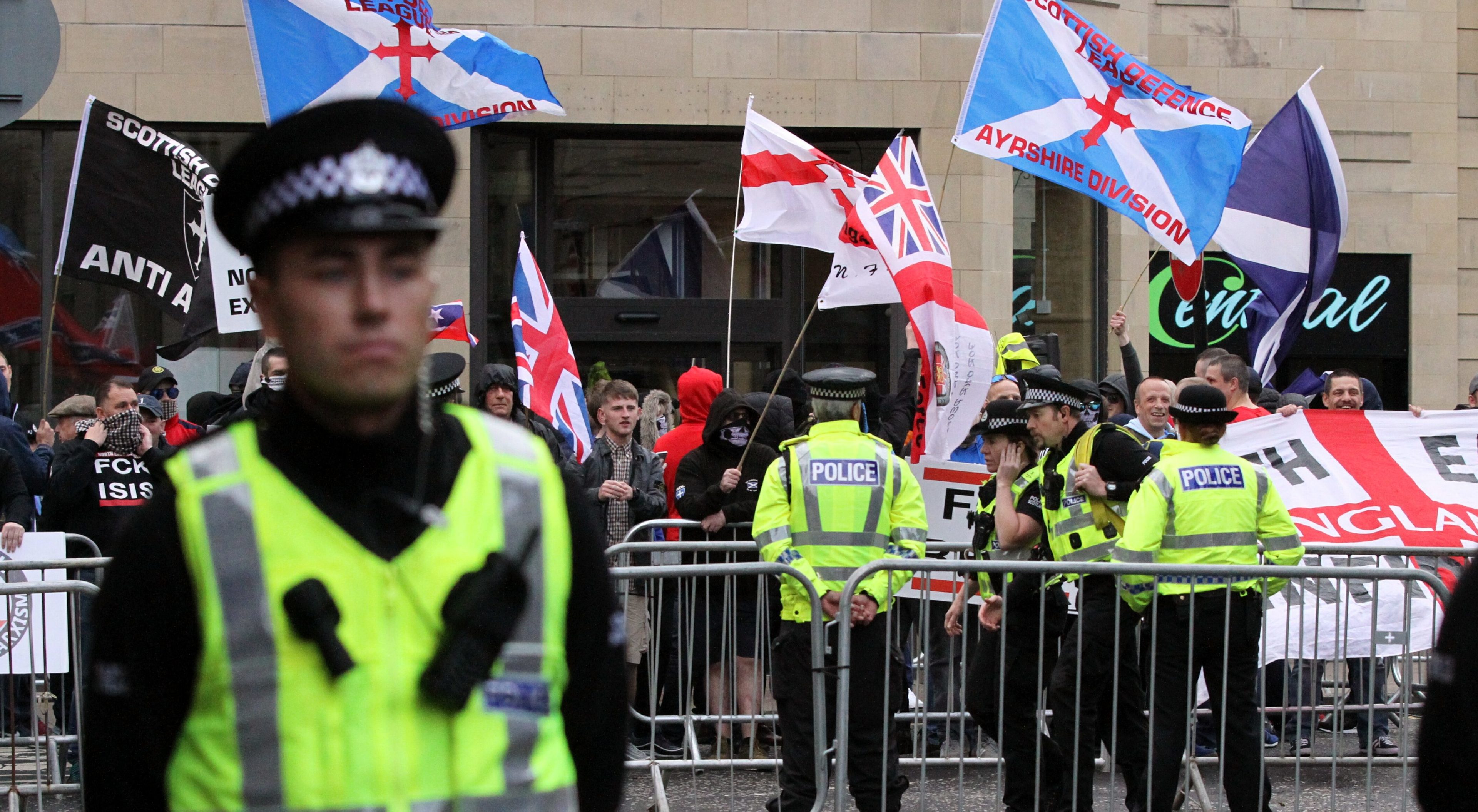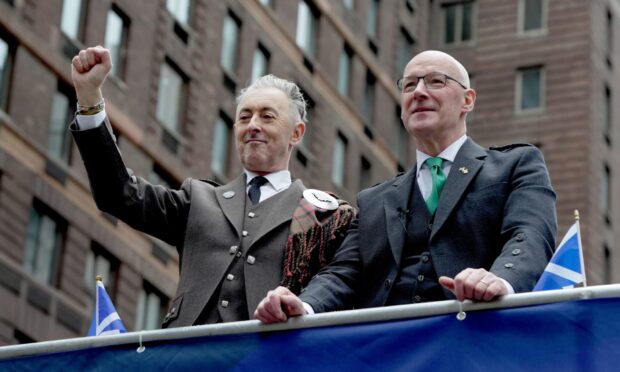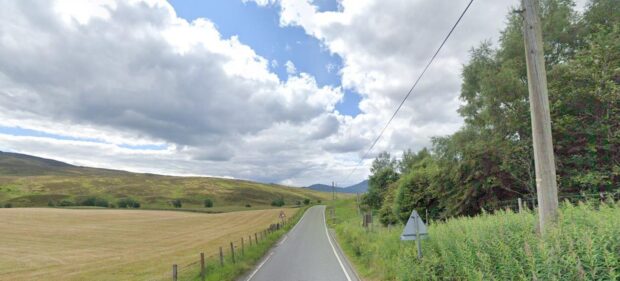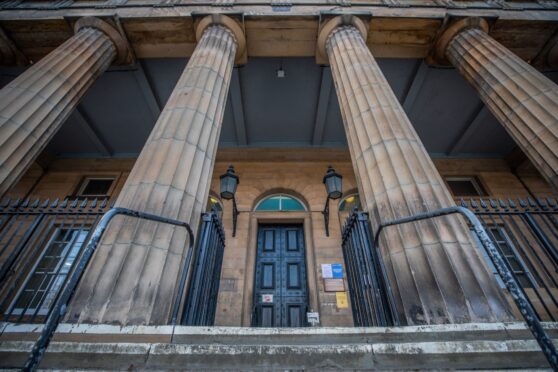Police claim they do not know the cost of policing the controversial Perth march by the Scottish Defence League (SDL).
The force also refused to reveal how many officers took part in the massive operation which saw more than 400 people march through the streets in a counter-protest against the far-right group’s presence in the city.
The SDL travelled to Perth on September 10 to show their opposition to plans to build a new mosque in the city.
Scores of police, riot vans and officers on horseback were positioned throughout the city centre hours before the anti-fascist rally set off from Perth railway station.
Chief Inspector Ian Scott, area commander for Perth and Kinross, recently stated he had received “positive” feedback from many groups regarding policing of the event.
The Courier asked Police Scotland through Freedom of Information laws to reveal the cost of policing the march and counter-demonstration but was told its financial systems “do not record” such details.
Police Scotland further claimed disclosure of the number of officers involved would “compromise” any tactical advantage the police may have over such persons when dealing with any “crime or disorder.”
The force also claimed it would “adversely impact” the “operational effectiveness” of policing such processions in the future.
Pete Wishart, MP for Perth and North Perthshire, who took part in the counter-demonstration against the SDL, praised the police response to the event, calling it “exemplary,” but questioned the reasoning behind the force’s reticence to reveal the cost.
“There seems to be no good reason to withhold the costs of this activity from the public,” he said.
“I would think that the vast majority of demonstrators and the Perthshire public would welcome the release of these figures.”
In the police response to the FoI request, a spokesperson said the “primary duty” of Police Scotland at a march or demonstration is to ensure the safety of protestors, spectators and the general public.
“It is also incumbent on the service to prevent crime, detect offenders and ensure the procession proceeds with as little disruption to the community as possible,” he said.
“Release of the information requested would adversely impact on the operational effectiveness of the service in policing such processions in the future, which would be similarly resourced.
“Being aware of the numbers of officers on duty on these occasions would allow persons or groups intent on committing offences, or causing disorder, with the means to make a reasonable assessment of the number of officers on duty at similar processions in the future.”
The police spokesperson conceded public interest would “favour a disclosure” as this would contribute to the “public debate” surrounding the effective use of police resources.
However, he countered this by claiming there is “no public interest” in disclosing information which is likely to damage “the efficient conduct of the police service in relation to its law enforcement role, or have an adverse impact on public safety.”
“This would allow those intent on wrong-doing to gauge, with some accuracy, the level of specific police resources at such processions and tactics utilised by the police,” he added.










